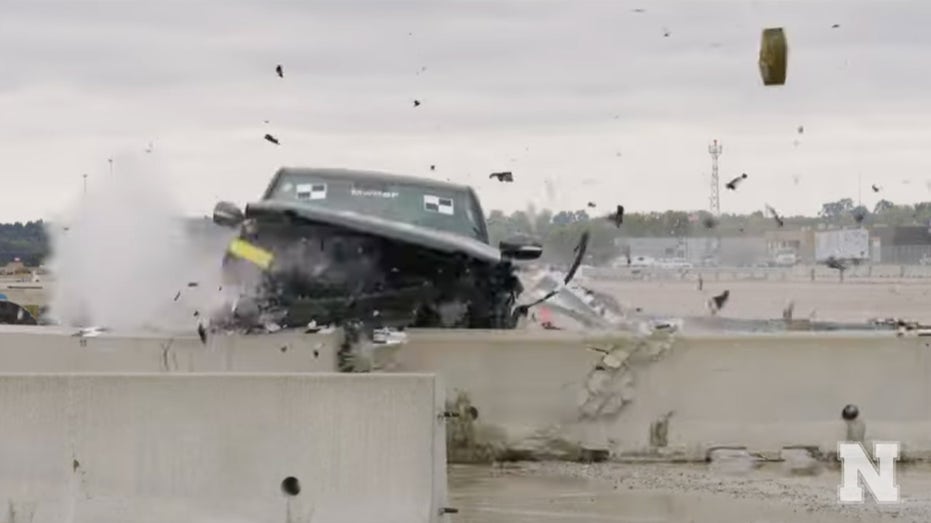US guardrail system can’t handle heavy EVs, preliminary test crashes indicate
The extra weight of electric vehicles comes from their outsized batteries needed to achieve a travel range of about 300 miles per charge
Electric vehicles are good for some things, not a lot of things: Bjorn Lomborg
Copenhagen Consensus President Bjorn Lomborg discusses the electric vehicle push and the costly impact it will have on the U.S.
A new study from the University of Nebraska indicates the nation’s guardrails are ill-equipped to handle electric vehicles, which weigh thousands of pounds more than the average gas-powered sedan.
Engineers with the university’s Midwest Roadside Safety Facility conducted test crashes with an electric-powered pickup truck and a Tesla sedan hurtling toward a guardrail — the same type found along tens of thousands of miles of roadway across the country.
The report, released Wednesday, concluded that the nation’s guardrails were not made to handle vehicles greater than 5,000 pounds.

A 2022 Rivian R1T is used for crash test research by the U.S. Army Corps of Engineers and Development Center and the University of Nebraska-Lincoln's Midwest Roadside Safety Facility in Lincoln, Nebraska, on Oct. 12, 2023. (University of Nebraska / Fox News)
The results come as transportation officials have been sounding the alarm over the weight disparity between the new battery-powered vehicles and lighter gas-powered ones. Last year, the National Transportation Safety Board expressed concern about the safety risks heavy electric vehicles pose if they collide with lighter vehicles.
ELECTRIC BUSES ARE SITTING UNUSED IN CITIES ACROSS THE US; HERE'S WHY
Road safety officials and organizations say the electric vehicles themselves appear to offer superior protection to their occupants, even if they might prove dangerous to occupants of lighter vehicles. The Rivian truck tested in Nebraska showed almost no damage to the cab's interior after slamming into the concrete barrier, Stolle said.
The extra weight of electric vehicles comes from their outsized batteries needed to achieve a travel range of about 300 miles per charge. The batteries themselves can weigh almost as much as a small gas-powered car. Electric vehicles typically weigh 20% to 50% more than gas-powered vehicles and have lower centers of gravity.

A Rivian R1T electric truck is seen outside Munro & Associates headquarters in Auburn Hills, Michigan, on June 3, 2022. (REUTERS/Rebecca Cook/File Photo / Reuters Photos)
The concern over the EV’s weight even extends beyond vehicle-to-vehicle crashes and compatibility with guardrails. The extra weight will affect everything from faster wear on residential streets and driveways to vehicle tires and infrastructure like parking garages.
"A lot of these parking structures were built to hold vehicles that weighed 2,000 to 4,000 pounds — not 10,000 pounds," Michael Brooks, executive director of the nonprofit Center for Auto Safety, told The Associated Press.
CLICK HERE TO GET THE FOX BUSINESS APP
"What really needs to happen is more collaboration between transportation engineers and vehicle manufacturers," Brooks said. "That's where you might see some real change."





















